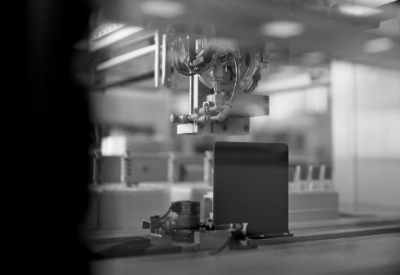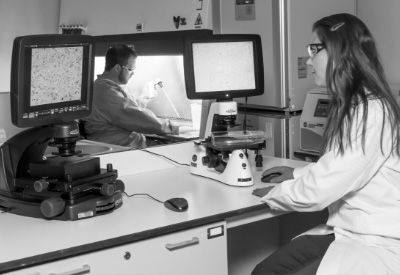Betavoltaic Batteries: A Historical Review
Betavoltaic Batteries: A Historical Review
Dr. Larry Olsen, Denset Serralta, and Dr. Peter Cabauy
City Labs, Inc.
301 Civic Court
Homestead FL 33030
History:
In 1953, Paul Rapport at RCA was the first to describe a betavoltaic device with a SR90-Y90 radioactive source. It yielded an efficiency of 0.2% and degraded quite rapidly due to radiation damage [1]. Several others continued research into betavoltaics [2,3], but the most extensive effort in producing a viable betavoltaic power source appears to have been carried out at Donald W. Douglas Laboratories (DWDL) from 1968 to 1974 under the leadership of Dr. Larry Olsen, one of the authors and member of the City Labs team[4,5]. Pm-147 beta sources were combined with custom designed Si n/p cells to produce nuclear batteries for heart pacemakers. The power sources were referred to as Betacel batteries. The basic approach to battery fabrication involved stacking unidirectional-source/Si-n/p cell units in a series arrangement as depicted in Figure 1A. A picture of a 400 microwatt battery is shown in Figure 1B. Much of the battery volume shown in Figure 1B is due to shielding. The efficiency of these batteries was approximately 4 % based on incident beta flux. Development of bidirectional beta sources was underway when the program ended. Advanced batteries based on bidirectional sources would have exhibited an efficiency of 8 %. The volume of the battery shown in Figure 1 was approximately one cubic inch, or 16 cm3. Most of the volume was required for shielding the gamma radiation emitted from the Pm-146 contaminant in Pm-147.

Figure 1B

Figure 1A
Figure 1. (A) Configuration used for Betacel batteries. (B) Picture of a Betacel battery that produced 400 μW. A large part of the total volume of approximately 1 in3 was due to shielding.
The Betacel was used to power cardiac pacemakers in over 100 patients during the 1970’s, but due to gamma radiation concerns, however, the Lithium battery was able to capture the pacemaker market. Despite the stigma surrounding the earlier work, numerous research groups have continued their attempts to commercialize a safe and reliable betavoltaic battery. Subsequent thereto, Dr. Olsen published a betavoltaic review [6] suggesting Tritium as a safe, reliable, and abundant alternative to other radioisotopes. Independently, City Labs also concluded that Tritium would serve well as an excellent candidate for use within a betavoltaic battery design. This conclusion was prompted by Tritium’s use within the public domain in Exit signs for school buildings and theaters, wrist-watches, and illuminated gun/rifle sights. These currently fielded applications of Tritium are fueled by somewhat mitigated levels of regulatory compliance criteria as compared to other betavoltaic radio-isotope candidates (e.g. Pm-147, Ni-63).
References:
- P. Rapport, “The Electron-Voltaic Effect in p-n Junctions Induced by Beta Particle Bombardment,” Phys. Rev. 93, 246 (1953)
- W.G. Pfan and W. Van Roosbroeck, “Radioactive and Photoelectric p-n Junction Power Sources,” J. Applied Phys. 25, 1422 (1954).
- H. Flicker, J.J. Loferski and T. S. Elleman, “Construction of a Promethium-147 Atomic battery,” IEEE Trans, ED-11 2 (1964)
- L.C. Olsen, “Betavoltaic Energy Conversion,” Energy Conversion 13, 117 (1973).
- L.C. Olsen, “Advanced Betavoltaic Power Sources,” Proc. 9th Intersociety Energy Conversion Engineering Conference, page 754 (1974).
- Olsen, Larry C., “Review of Betavoltaic Energy Conversion,” Proc. 12th Space Photovoltaic Research and Technology, 256-267.
Author Contact Information:
- Dr. Larry Olsen, R&D Director — larry.olsen@citylabs.net Tel: 305-323-8282, Fax: 305-348-7176
- Denset Serralta, CTO — dserralta@citylabs.net, Tel: 305-323-8282, Fax: 305-348-7176
- Dr. Peter Cabauy, CEO — pcabauy@citylabs.net, Tel: 305-348-7313, Fax 305-348-7176
The Nuclear Battery Company with a Vision
Reach out to us to discuss your platform’s power needs and how City Labs’ power solutions can help it run longer and more efficiently.
Contact Us Today



